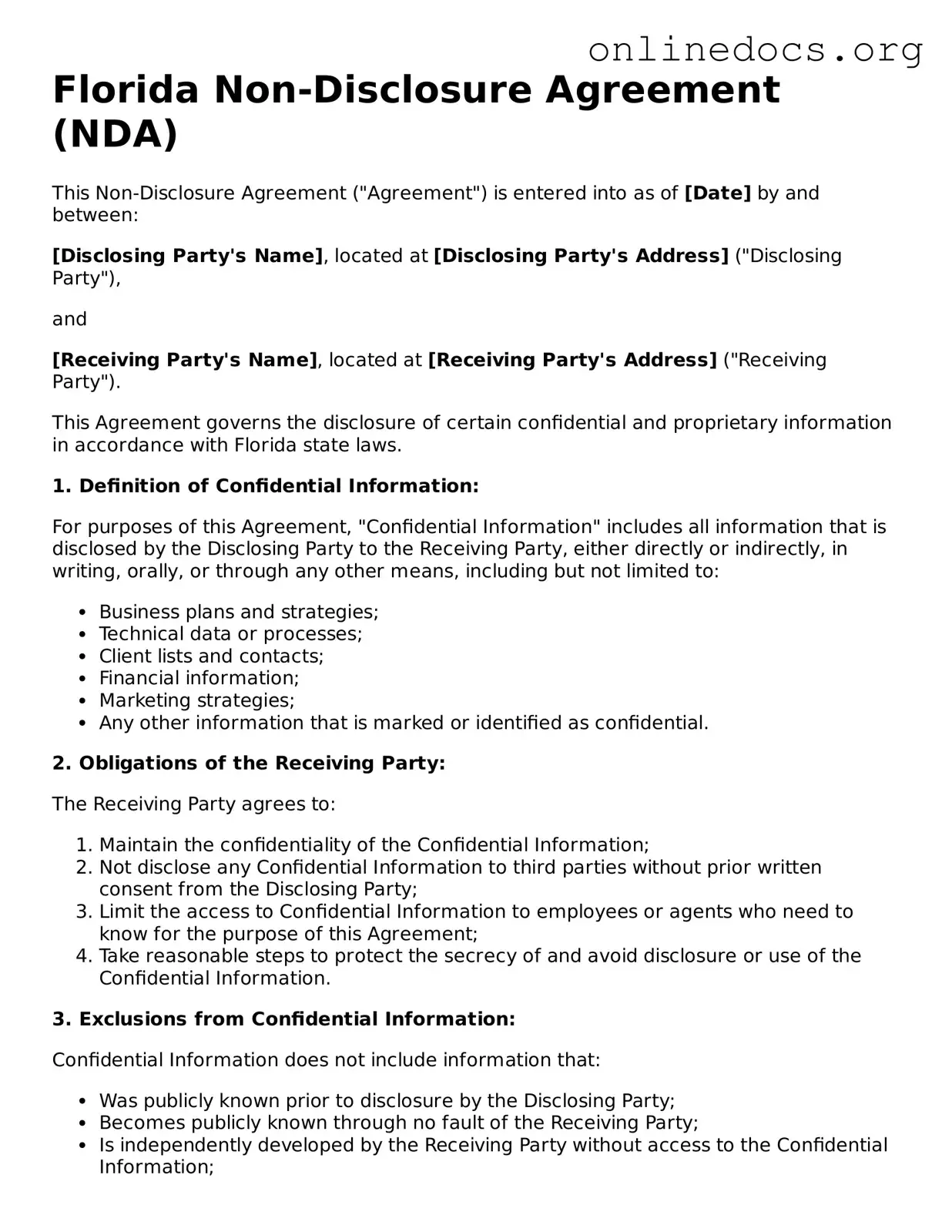A Confidentiality Agreement is similar to a Non-disclosure Agreement (NDA) in that both documents are designed to protect sensitive information. Typically used in business contexts, a Confidentiality Agreement outlines the obligations of parties to keep certain information private. It serves to prevent the unauthorized sharing of proprietary information, trade secrets, or any other confidential data. The main difference lies in the terminology; while an NDA emphasizes the non-disclosure aspect, a Confidentiality Agreement may cover a broader range of obligations, including the handling and use of confidential information.
A Mutual Non-disclosure Agreement is another document that shares similarities with the Florida NDA. This type of agreement is used when both parties intend to share confidential information with each other. In this scenario, each party agrees to keep the other's information confidential. This bilateral approach is beneficial in negotiations or partnerships where both sides have sensitive information to protect. It emphasizes the mutual nature of the confidentiality obligation, contrasting with a unilateral NDA where only one party discloses information.
To create a robust estate plan, it's essential to consider a proper comprehensive Last Will and Testament. This document helps ensure that your wishes regarding asset distribution and guardianship for any dependents are clearly defined, providing clarity to your loved ones during a challenging time.
An Employment Agreement often includes a non-disclosure clause, making it akin to an NDA. Employees may have access to confidential company information, and the non-disclosure clause serves to protect that information from being shared outside the organization. This clause ensures that employees understand their responsibilities regarding confidentiality and the consequences of breaching that trust. The inclusion of a non-disclosure clause in an Employment Agreement highlights the importance of safeguarding sensitive information within the workplace.
A Non-compete Agreement may also bear similarities to a Non-disclosure Agreement, particularly in its intent to protect business interests. While a Non-compete Agreement restricts an individual from engaging in business activities that compete with their employer, it may also include clauses that prevent the sharing of confidential information. This dual purpose helps safeguard both the company’s trade secrets and its competitive edge in the market. The overlap between these agreements underscores the importance of confidentiality in maintaining a business's viability.
A Non-solicitation Agreement is another document that can be related to NDAs. This type of agreement prevents individuals from soliciting clients or employees from their former employer for a specified period. While its primary focus is on preventing competition, it often contains provisions regarding the handling of confidential information. By restricting solicitation, the agreement indirectly protects sensitive information that could be shared in the course of business dealings.
A Licensing Agreement may also contain elements similar to a Non-disclosure Agreement. When licensing intellectual property, such as patents or trademarks, parties often need to share confidential information to facilitate the agreement. The Licensing Agreement may include clauses that require both parties to maintain confidentiality regarding the shared information. This ensures that proprietary knowledge remains protected during the licensing process, highlighting the importance of confidentiality in business transactions.
A Partnership Agreement can include confidentiality clauses similar to those found in NDAs. When forming a partnership, parties often share sensitive business information to establish trust and collaboration. A Partnership Agreement may outline the responsibilities of each partner regarding confidentiality, ensuring that proprietary information is not disclosed to outside parties. This aspect of the agreement is crucial for maintaining the integrity and competitive advantage of the partnership.
A Settlement Agreement, particularly in legal disputes, may also resemble a Non-disclosure Agreement. Often, parties involved in a settlement will agree to keep the terms of the settlement confidential. This confidentiality protects the interests of both parties and can prevent reputational harm. The agreement will typically outline what information must remain private and the consequences of any breach, similar to the obligations found in a traditional NDA.
Finally, a Service Agreement may contain confidentiality provisions akin to those in a Non-disclosure Agreement. Service providers often gain access to sensitive information while delivering their services. To protect this information, the Service Agreement may include clauses that require the service provider to keep all proprietary information confidential. This ensures that clients' sensitive data is safeguarded, reinforcing the importance of confidentiality in service relationships.
